Museo García Uriburu, Maldonado, Uruguay
Diciembre 2022-marzo 2023
Voy y Vuelvo
Los libros (una de las muchas herramientas del lenguaje) son una antigua tradición en China. Hace pocos siglos atrás a la vieja técnica china del libro plegado se le llamó leporello en Europa y, más tarde, concertina. Hoy en día le conocemos también por su variante de origen japonés, orihon, la cual es a su vez una interpretación de un signo chino de intrincada traducción.
La particular historia de los libros plegados, presentes en diversas tradiciones culturales, es larga, variada y diría que hasta divertida.
En tiempos recientes los sistemas del arte han acuñado el término artist’s books o libros de artista para caracterizar cierto tipo de obras que echan mano de procedimientos más o menos eclécticos.
Con un ojo siempre puesto en los impagables codex mesoamericanos, a este proyecto le anima su entusiasmo por las múltiples tradiciones de los libros plegados. (*)
Carlos Capelán
Lund, Suecia, octubre 2022
(*) Durante mi adolescencia hubiera querido ser poeta. Tanto me infatué con ello que llegué a torturar varias audiencias con recitales de lo que llamaba ¨poesía aleatoria¨ y cometí incluso un par de poemarios. En un momento de lucidez advertí la debilidad de mis habilidades y dejé de escribir poemas. Me llevó tiempo entender que lo poético, sin ser una forma definida, es una instancia a la que se puede acceder de varias maneras. No es que mis ¨libros de artista¨ se propongan ser artilugios de un poeta escondido, pero es posible que estos libros intenten andanzas entre relato y paisaje.
……….
I Come and Go
Books (one of many language tools) are an ancient tradition in China. The old Chinese technique of the fold-out book was called leporello in Europe and, later, concertina. Today we also know it through its Japanese variant, orihon, which in turn is an interpretation of a Chinese symbol of intricate translation.
Fold-out books have been present within a diverse range of cultural traditions, and their history is long, varied, and I would even say amusing.
The art systems have recently coined the term artist’s books to characterize a certain type of work, that lends a hand from more or less eclectic procedures.
While never losing sight of the priceless Mesoamerican codex, this project gathers enthusiasm from these multiple traditions of fold-out books. (*)
Carlos Capelán
Lund, Sweden, October 2022
(*) As a youngster I wanted to become a poet. I was so infatuated with this, that I came to torture several audiences with recitals of what I called “aleatory poetry” and I even committed a couple of collections of poems. Then, for a lucid moment, I noted the debility of my abilities, and quit writing poems. It took time for me to understand that the poetic, without being a fixed format, is an instance which one can access in many ways.
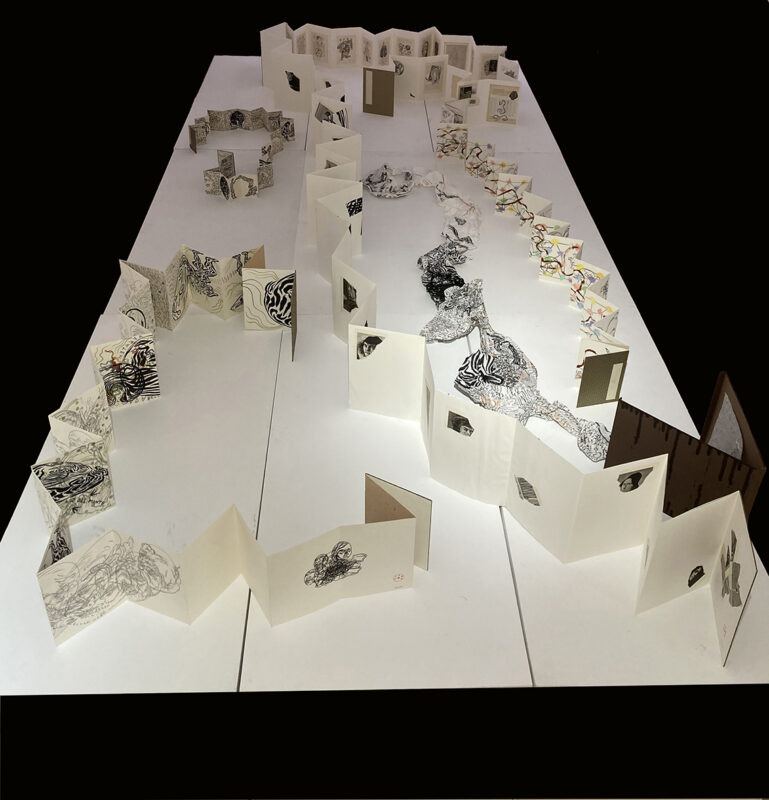
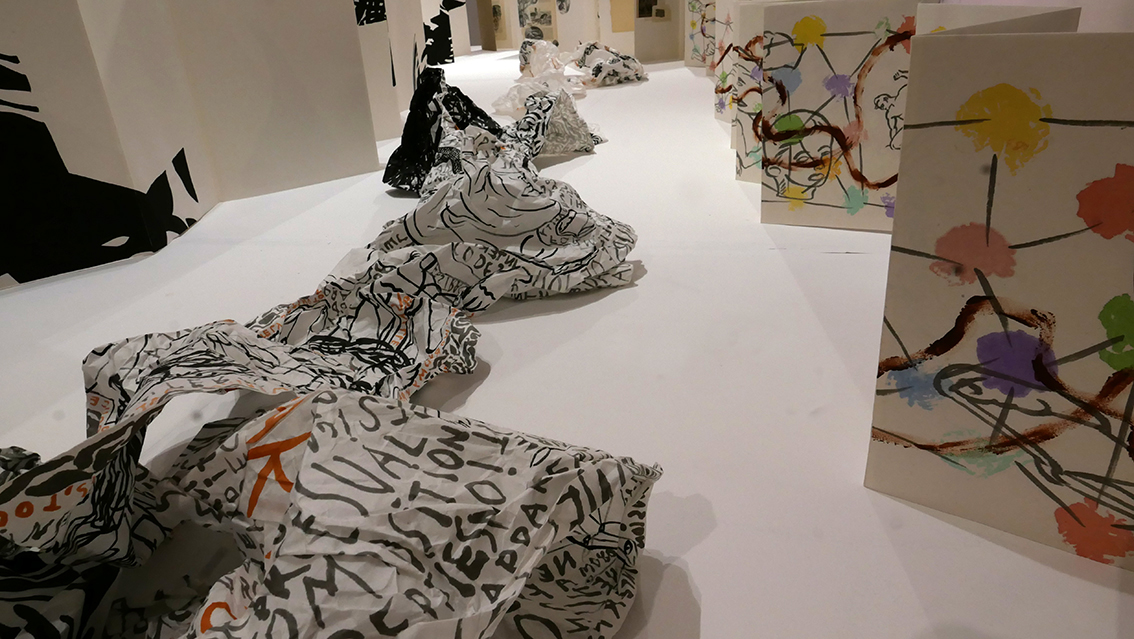
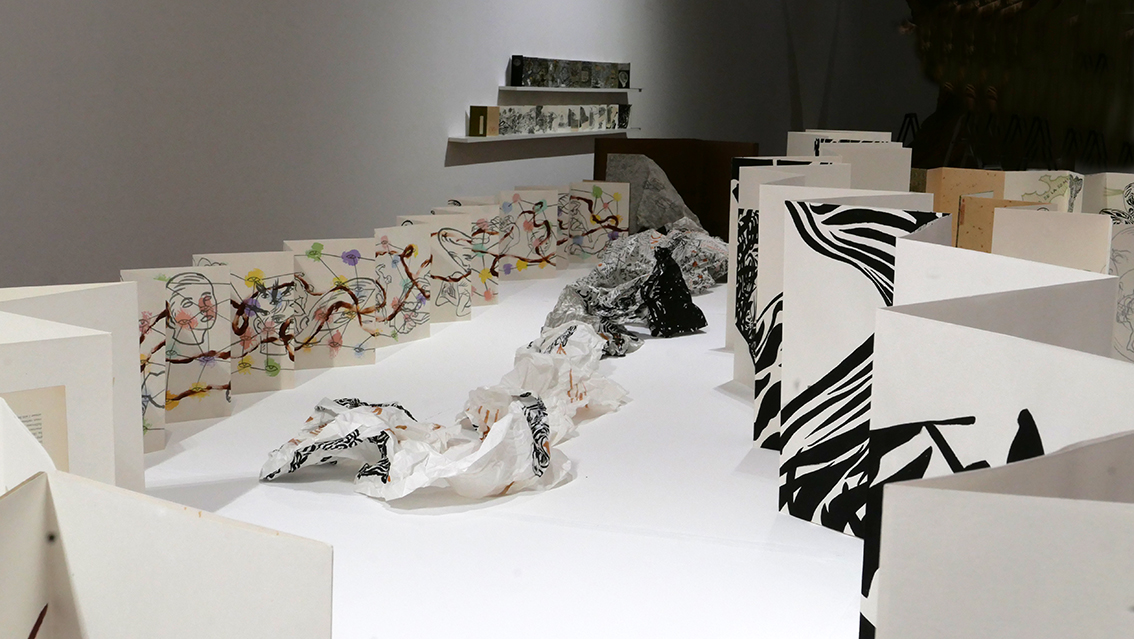
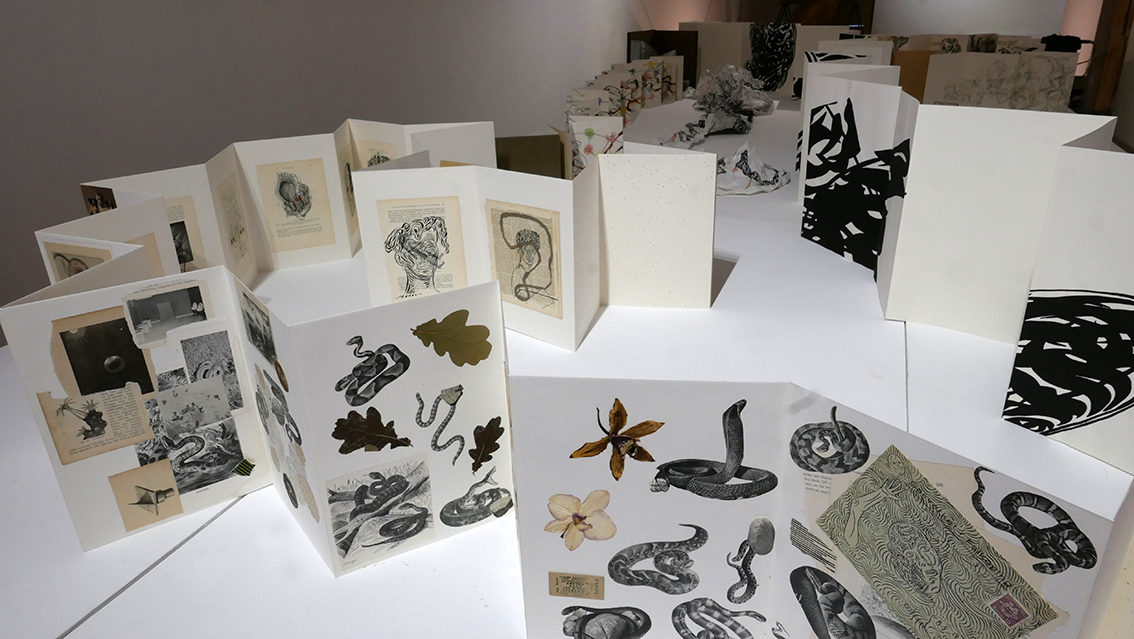
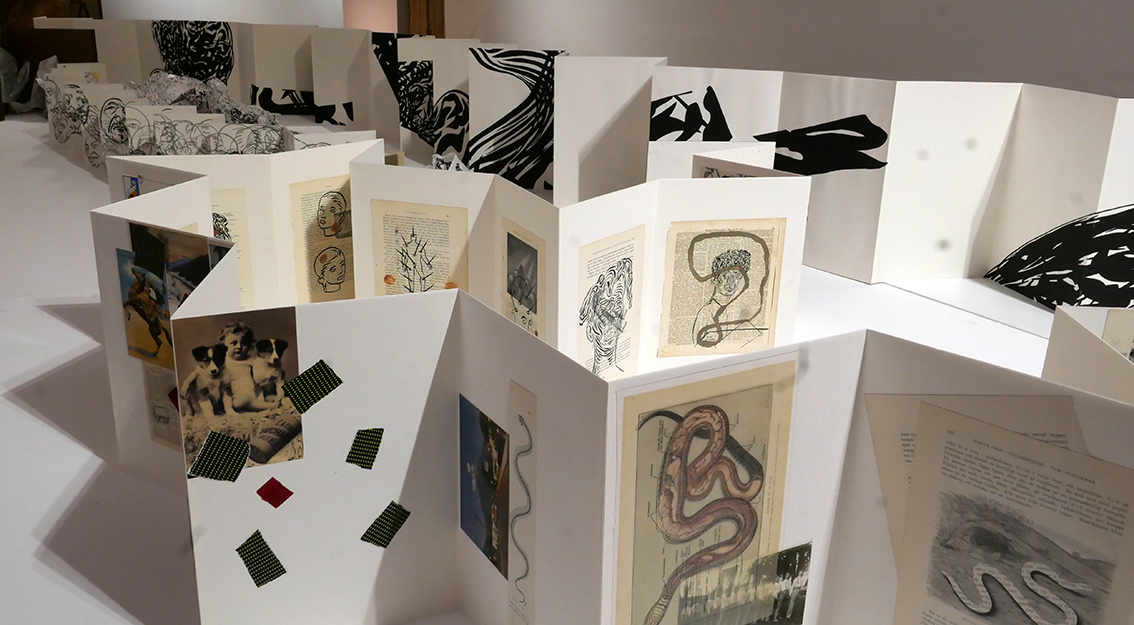
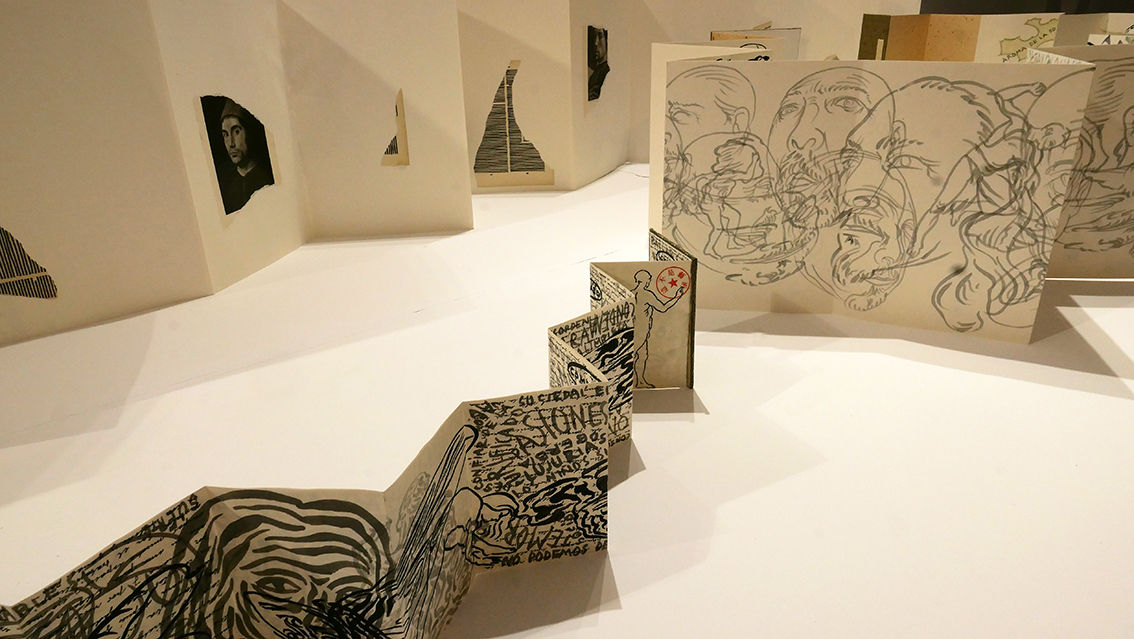
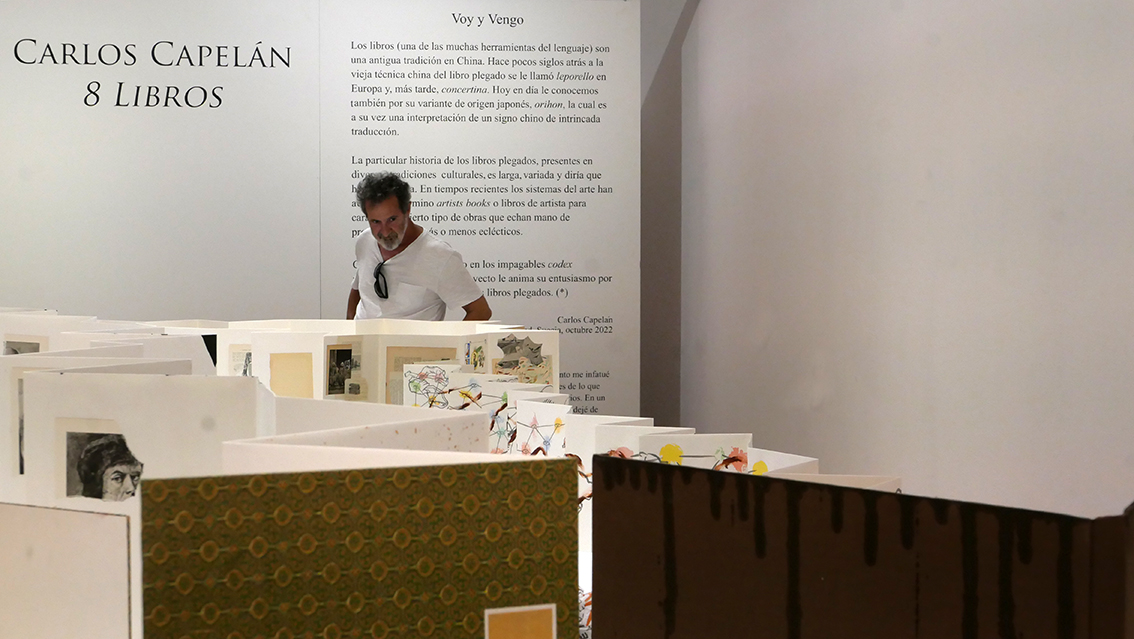
LOS LIBROS:
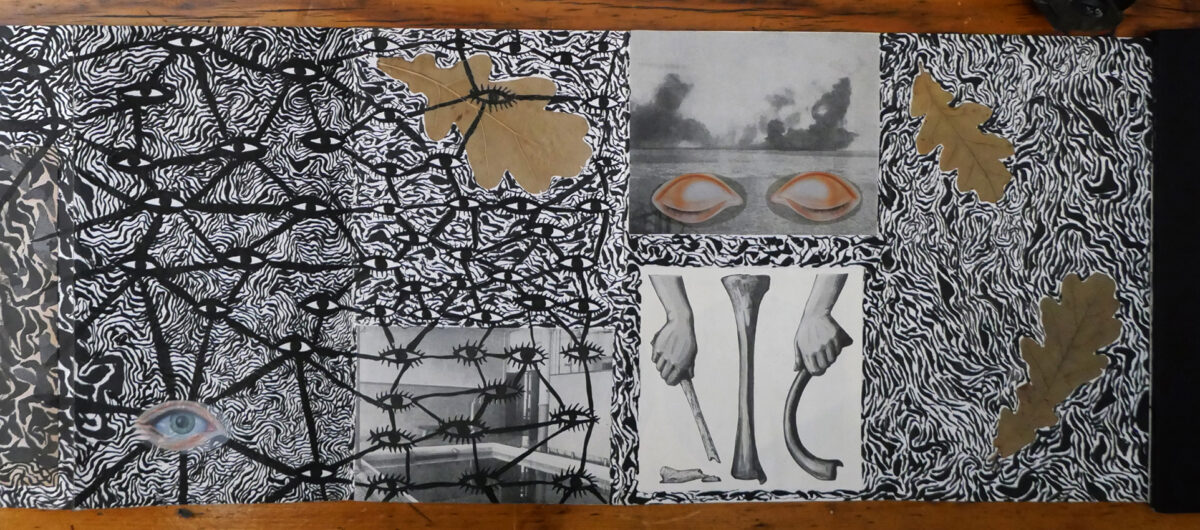
Media Hora en el Barrio, tinta y collage sobre libro chino, 15,5 x 198 cm (abierto)

Pahoehoe (ropey), tinta y acuarela sobre papel, 40,5 x 900 cm (máxima desplegado, medidas variables), doble faz
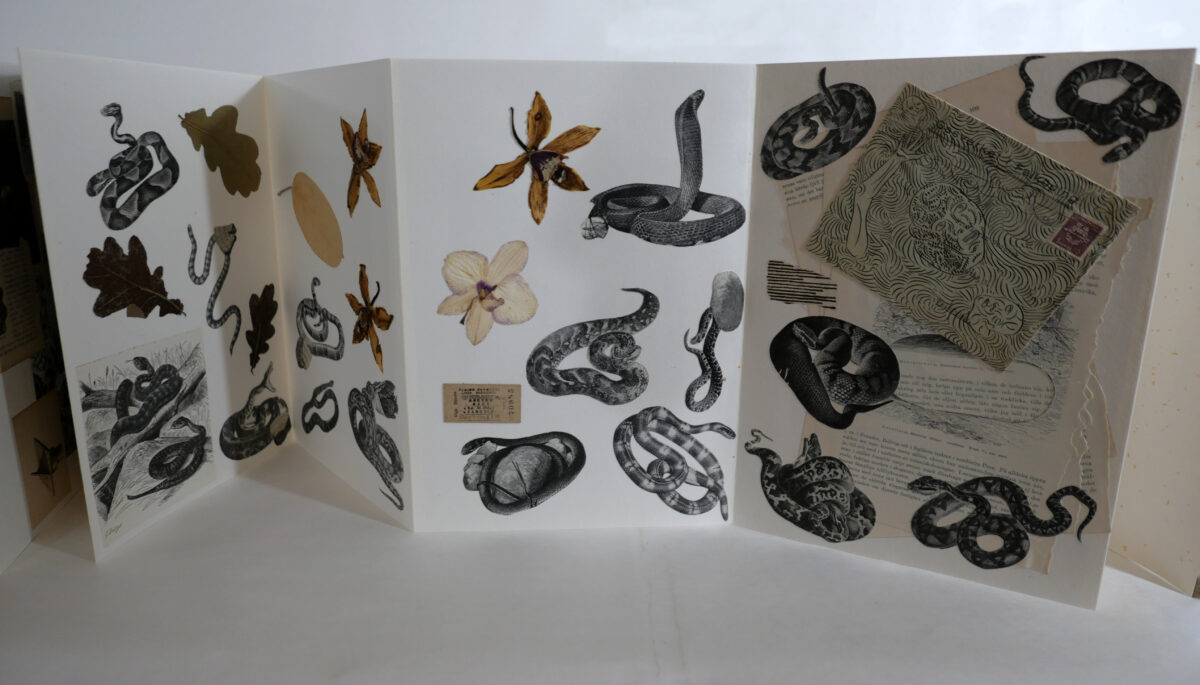
El Arte del Pecado, Tinta, páginas de libro y collage sobre libro chino, 45 x 832 cm (abierto), doble faz
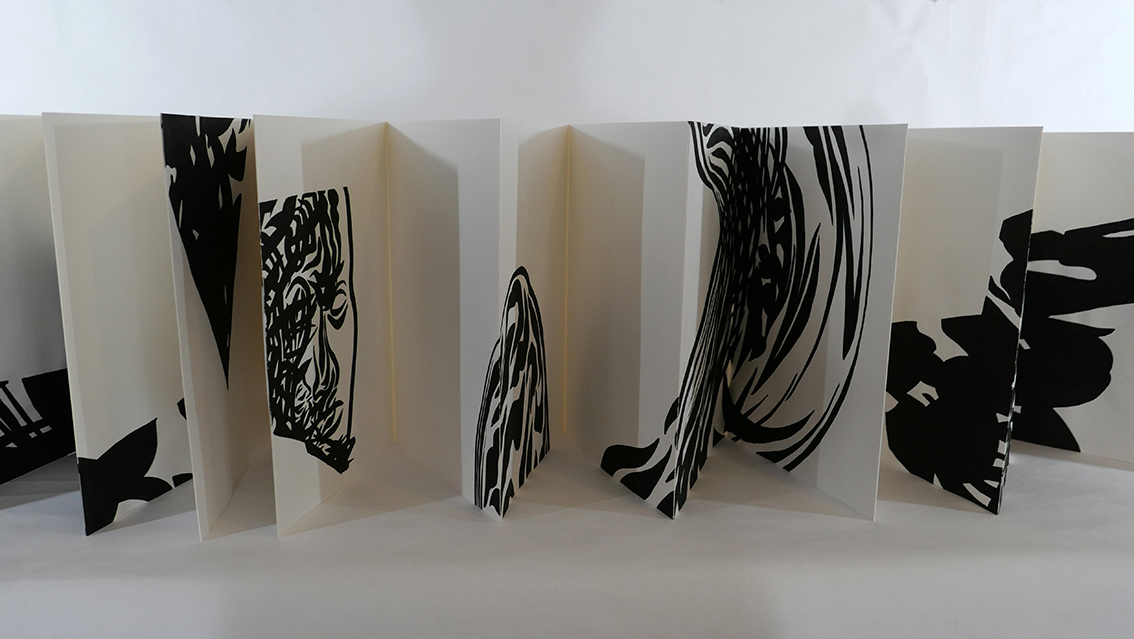
The Art of Painting (SXV), tinta, páginas de libro y collage sobre libro chino, 35 x 625 cm (abierto), doble faz
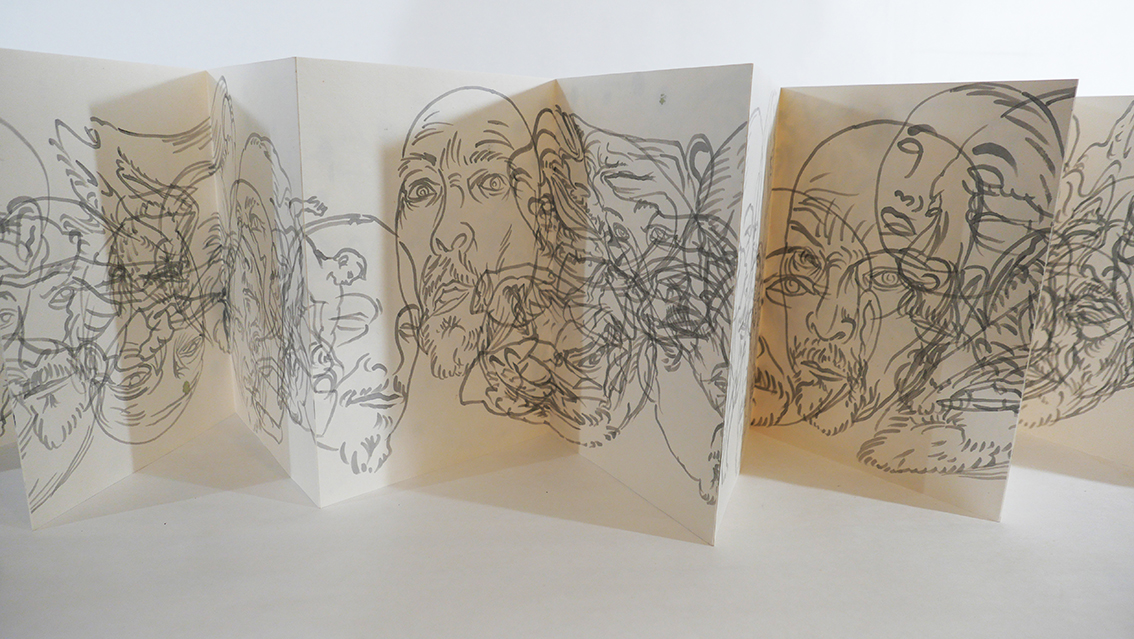
Tren de cenizas, tinta, y acrílico sobre libro chino, 28 x 540 cm (abierto), doble faz

The Art of Reading, tinta y collage sobre libro chino, 15 x 268 cm (abierto), doble faz
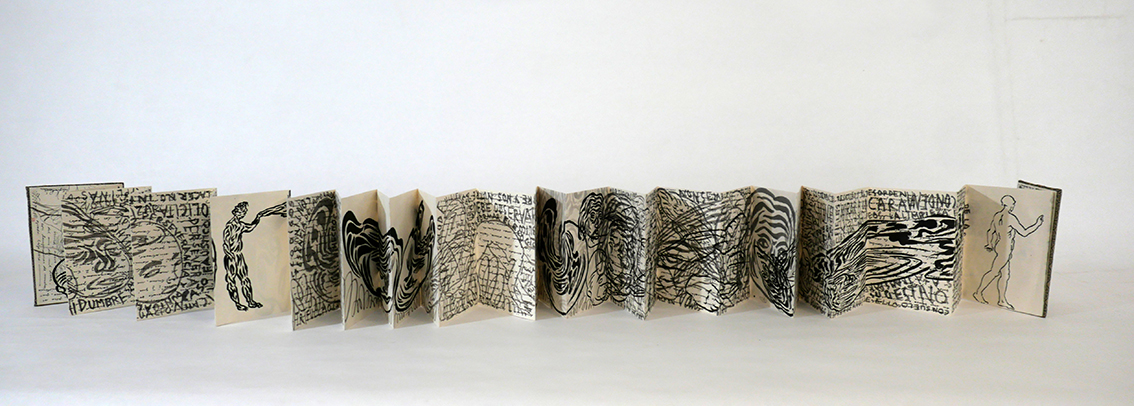
El Arte de No Escuchar, tinta sobre libro chino, 16,5 x 340 cm (abierto), doble faz
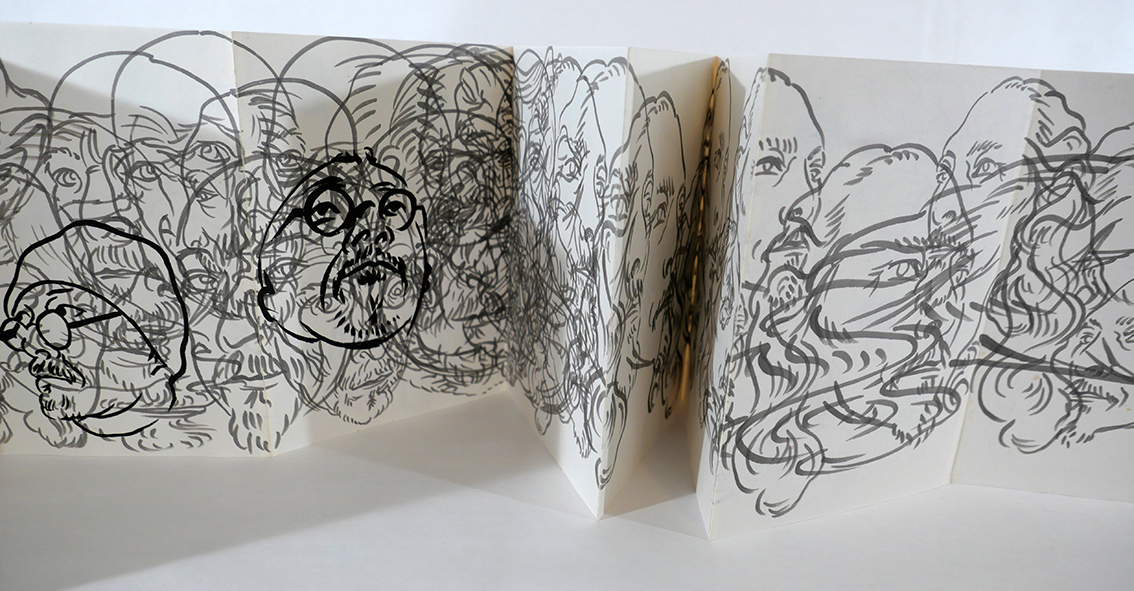
El Tren Fantasma, tinta y acrílico sobre libro chino, 28 x 540 (abierto), doble faz